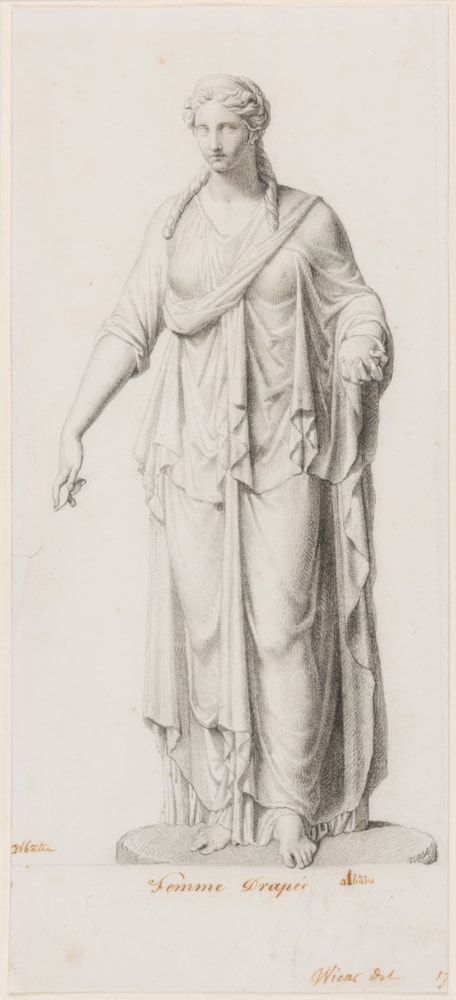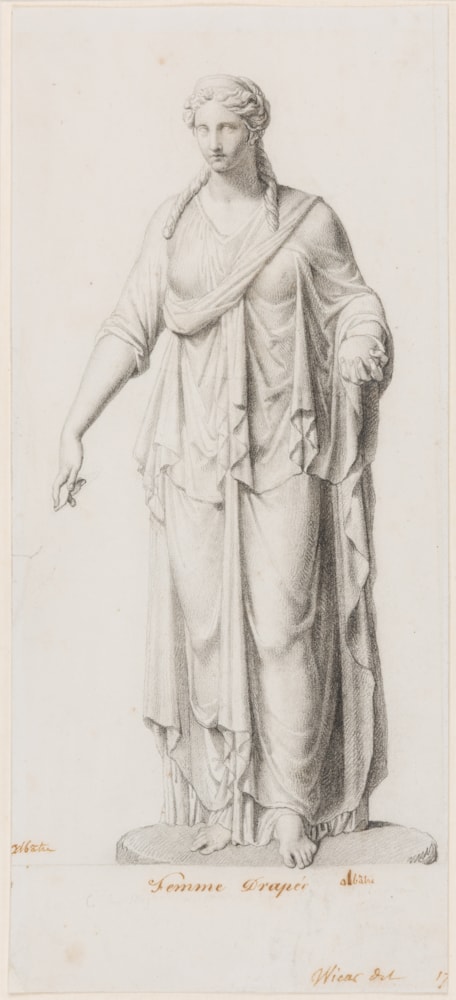
Jean-Baptiste WICAR
Lille 1762 - Rome 1834
Biography
Born to the family of a cabinetmaker, Jean-Baptiste Wicar began his career, when he was only ten years old, as a student at the free school of drawing in Lille, under Louis Jean Guéret. Two years later, in 1774, he showed for the first time at the Salon de l’Académie des Arts in Lille, where he was to exhibit drawings almost every year until 1786. At seventeen Wicar received a grant to study for two years in Paris, in the studio of the printmaker Jean-Jacques Philippe Le Bas. Dividing his time between studio and school, Wicar spent his evenings studying draughtsmanship at the Académie Royale. When the period of this grant drew to a close, his father went to the magistrate of Lille and was able to successfully renew the grant for another two years, so that Wicar could continue his studies. This time however, he entered the studio of the renowned artist Jacques-Louis David. He had great success working alongside David, when his second grant came to an end, the city of Lille renewed it, and Wicar continued to work closely alongside David. (In 1784 a malicious rumour, instigated by rivals jealous of Wicar, suggested that Wicar’s first painting, Joseph Interpreting Dreams, was the work of David himself.) In 1784 Wicar accompanied David to Rome for a year, and he returned to Italy as an independent artist, working in Florence, Rome and Naples between 1787 and 1793, during the early years of the Revolution in France.
He was back in Paris at the end of 1793, and the following year, at the instigation of David, was appointed a curator of antiquities at the Muséum Central des Arts. With the fall of David later that year, however, Wicar lost his position. Briefly imprisoned in 1795, on his release he returned to Italy, and worked there for most of the rest of his career. Known especially for his expertise in Italian art, Wicar was charged by Napoleon with selecting works in Italy to be confiscated and sent to Paris. The last thirty or so years of his career were spent in Rome, where he enjoyed a reputation as a celebrated painter, draughtsman and printmaker, as well as an art dealer, collector and a highly respected connoisseur of art and antiquities. One of his most significant later works was a massive canvas of The Raising of the Son of the Widow of Nain, on which he worked for some ten years. Completed in 1816, the painting - measuring 5 by 9 metres - is today in the museum of his native city of Lille.


